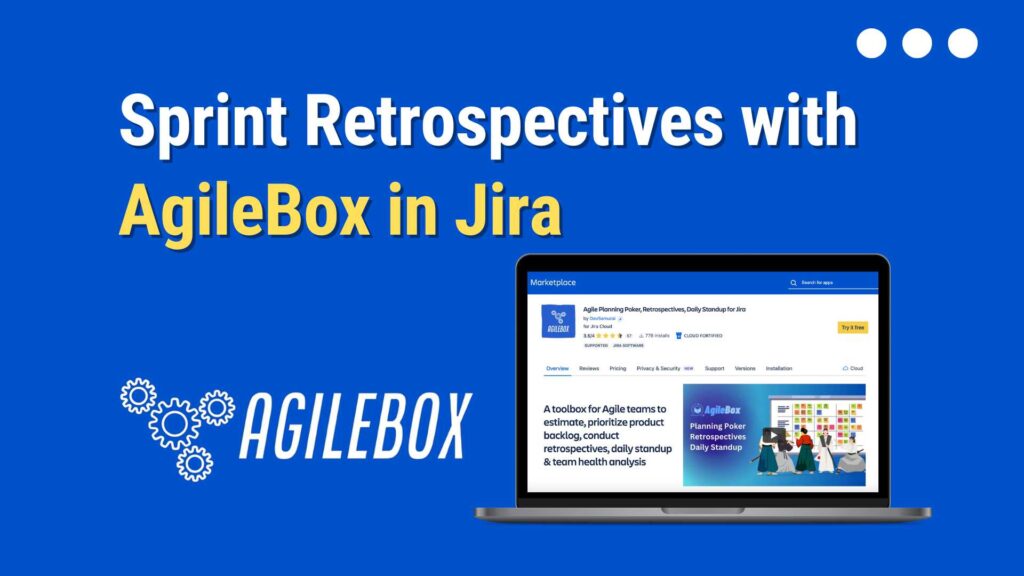Ever wondered why some software development projects succeed with flying colors while others struggle to keep pace? The secret often lies in a little-known Agile ritual: The Sprint Retrospective. So what is a Sprint Retrospective? Let’s dive into why it’s a game-changer in the Agile world.
Contents
What is a Sprint Retrospective?
A Sprint Retrospective is a crucial meeting in Agile development, marking the end of each sprint. It’s where teams collaboratively reflect on their recent sprint – celebrating successes, pinpointing hiccups, and identifying improvements for future sprints.
This meeting isn’t about assigning blame but about collaborative growth, and identifying what worked well and what didn’t. It’s a time for constructive feedback, fostering a culture of continuous improvement and learning. By pinpointing areas of strength and weakness, the team crafts actionable strategies to enhance future Sprints, nurturing efficiency, and team unity in the Agile voyage.
See more: Agile Retrospective Explanation
Key Components of a Successful Sprint Retrospective
1. Constructive Review
A successful Sprint Retrospective involves reviewing past achievements and challenges, focusing on improvements made during the current sprint. This includes examining the outcomes of previous retrospectives and understanding their impact on current practices.
2. Team Engagement and Participation
Ensuring all team members are fully present and engaged is crucial. This can be achieved through pre-retrospective discussions, open communication, and addressing any potential distractions or barriers to participation.
3. Data-Driven Analysis
Gathering and utilizing data effectively is key. This involves collecting relevant information about the sprint and encouraging divergent thinking to extract meaningful insights from team members’ experiences and perceptions.
4. Prioritization and Decision-Making
The retrospective should lead to actionable decisions. This requires focusing on areas that are of high interest and impact to the team, rather than merely addressing the most significant issues. Utilizing tools like the Impact/Interest matrix can be beneficial in this process.
5. Feedback and Iterative Improvement
Closing the retrospective with feedback collection and future planning is essential. Encouraging creative and fun elements can enhance team expression and lead to deeper insights. Tracking improvements over time and avoiding repetitive mistakes are vital for long-term progress.
These elements, when combined, create a robust framework for effective Sprint Retrospectives, ensuring continuous improvement and team collaboration in the Agile development process.
What is the purpose of the Sprint Retrospective?
The purpose of the sprint retrospective is multifaceted, central to the Agile process, and pivotal for continuous improvement. This retrospective aims to evaluate each sprint in terms of people, relationships, processes, and tools. It’s not just a review of what has been achieved; it’s a proactive approach to identify and plan for potential improvements in upcoming sprints.
By facilitating discussions on successes, challenges, and collaborative solutions, the sprint retrospective empowers the Scrum team to enhance their work’s quality, efficiency, and effectiveness. It’s a strategic pause between sprints, ensuring the team aligns with Agile principles, addresses any roadblocks, and continually adapts to deliver greater value to stakeholders.
What are the challenges of Sprint Retrospectives?

Some common challenges when organizing sprint retrospective meetings
Addressing the challenges of a sprint retrospective is crucial for maximizing its effectiveness. Common hurdles include:
- Lack of Honesty and Communication: The success of a sprint retrospective hinges on transparency and open communication. However, team members often hesitate to admit mistakes or bring up real issues, hindering the process’s effectiveness.
- Stale Retrospectives: Repeating the same format in every retrospective can lead to boredom and decreased engagement. Innovating the approach by varying questions and exercises keeps the process fresh and productive.
- Inability to Capture Actions: Often, teams fail to record action items or review past retrospectives, impacting the continuous improvement goal. Utilizing agile project management tools to track and manage actions can mitigate this issue.
- Unsuitable Schedules: Coordinating retrospectives across different time zones in distributed teams poses a challenge. It’s essential to find a suitable time for all and keep the meetings concise to avoid fatigue.
- Lack of Planning: Teams sometimes overlook the planning aspect of retrospectives, leading to superficial discussions. Proper planning and encouraging team participation can lead to more meaningful outcomes.
How AgileBox transform the challenges of Sprint Retrospectives?
AgileBox addresses various challenges commonly faced during sprint retrospectives, offering innovative solutions for Agile teams:

Enhanced Engagement and Communication
AgileBox encourages active participation and open dialogue, essential for a successful sprint retrospective. Its seamless, user-friendly interface facilitates real-time discussions, ensuring transparency and fostering a comfortable environment for team members to voice their opinions.
Innovative and Diverse Templates
To prevent the monotony of stale retrospectives, AgileBox provides a variety of templates like DAKI, Mountain Climber, and SWOT Analyst. This variety keeps meetings engaging and allows teams to approach retrospectives with fresh perspectives each time.
See more: Custom Retrospective Templates | Easily customize your retro templates with AgileBox
Effective Issue Management
AgileBox simplifies adding and tracking issues during retrospectives. This feature addresses the common challenge of capturing action items, allowing teams to focus on discussion without switching windows, thus enhancing the productivity of the retrospective sessions.
Convenient Team Involvement
The tool enables quick invitation of team members, supporting widespread participation and simplifying the process of gathering everyone for a retrospective. This feature is particularly beneficial for distributed teams, ensuring everyone can be involved regardless of their location.
Comprehensive Summary and Analysis
AgileBox provides detailed summaries of each meeting, including reflections, groups, participants, and new issues. This thorough documentation aids in tracking progress over time and ensures that no critical insights or action items are lost, thus supporting continuous improvement.
Client testimonials also highlight AgileBox’s effectiveness in enhancing team collaboration, decision-making, and overall satisfaction, further demonstrating its capability to transform the challenges of sprint retrospectives into opportunities for growth and improvement.
Click to try AgileBox free: Agile Planning Poker, Retrospectives, Daily Standup for Jira
4. Best Practices for Sprint Retrospectives with AgileBox in Jira

Implementing best practices in retrospectives in Jira, especially when using tools like AgileBox, can significantly enhance the effectiveness of these sessions:
- Utilize Varied Templates: Leverage the diverse retrospective templates available in AgileBox to keep sessions engaging and productive. This variety helps in addressing different aspects of team performance and keeps the retrospective process fresh.
- Promote Real-Time Communication: Encourage open and honest communication during retrospectives. Using real-time discussion ensures active participation from all team members.
- Integrate Issue Tracking: Seamlessly add and track issues during the retrospective with Jira’s efficient issue management system. This ensures that action items are captured and addressed effectively.
- Ensure Comprehensive Documentation: Provide detailed summaries of retrospectives. This includes documenting reflections, decisions, and action items, which are crucial for tracking progress and continuous improvement.
- Foster Continuous Feedback: Regularly gather feedback on the retrospective process itself and adapt based on this input.
By integrating these practices with AgileBox’s feature, teams can conduct more effective and impactful sprint retrospectives.
5. Conclusion
In understanding “what is a sprint retrospective,” it becomes clear why this practice is vital in the Agile framework. It not only fosters continuous improvement and teamwork but also ensures that each sprint is more effective than the last. AgileBox has further enhanced this process, making retrospectives more engaging, efficient, and productive. With this knowledge, teams can fully leverage the power of sprint retrospectives to drive success in their Agile journeys.













